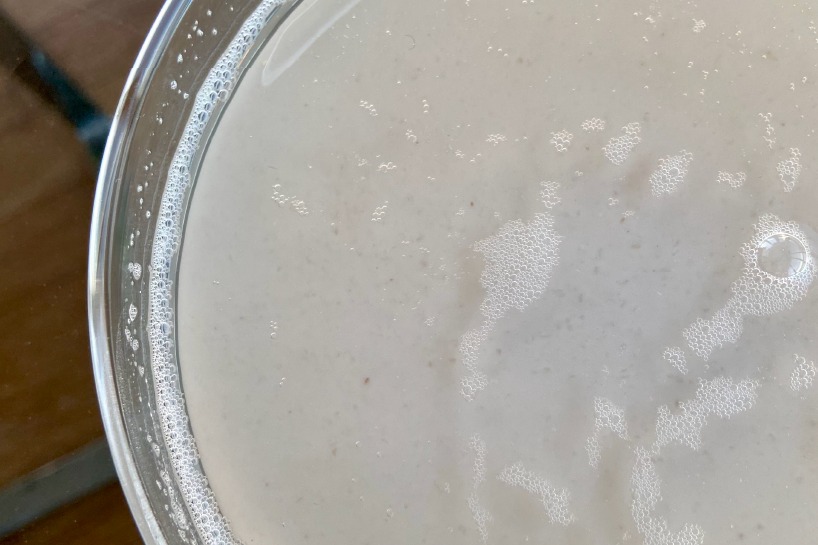Potato Starch
I know potatoes are supposed to be one of those vegetables that stay good forever but occasionally I find some sprouting roots in the back of my refrigerator and think….maybe that's a little too far gone to eat. It was on one of those occasions when I found myself with some beat up old potatoes on my hands and lacking enough corn starch for a bioplastic recipe that I realized the solution was right in front of my face. After a bit of online research I developed this process for extracting starch from potatoes and have had a fair bit of success! The process itself isn't terribly hard but it does require some time for the starch to settle out of solution – if you don't want to wait around you can always do this at night and recover your starch in the morning.
Ingredients
- 2 medium potatoes
Equipment
- food processor or hand blender
- sieve or cheesecloth
- clear glass or bowl
Preparation
- Quarter your potatoes and soak in water for 20 minutes.
- Either using a food processor or hand blender, pulse the potatoes in the water until the liquid is cloudy and the potatoes reduced to small chunks.
- Now you will need to separate the larger potato pieces from the liquid they've been soaking in. You can either pour the mixture through a sieve or strain through a cheesecloth.
- Let liquid sit for an hour or so until settled. You'll see a white layer on the very bottom of your container — that is the starch we're trying to obtain. Pour off the liquid until just the starch is left.
- Continue to soak your potato chunks in water and strain until the water runs clear rather than cloudy. This will ensure you get all the starch possible.
- Scrape starch out of your container and onto a non-stick surface in a thin layer to dry. You can accelerate the process using a dehydrator or a low-heat oven if necessary.
- Once dry, peel off the dried starch and place in a food processor. Pulse until you're left with a fine white powder. Now use in any recipe calling for starch — food or material!
Break Down the Material
Our first task is to physically break down the potatoes in order to make the starch available for extraction. I start by cutting them into quarters then covering them with enough water to cover the tops by about 1/2″. Next, I ran them through my food processor on pulse for 1-2 minutes until they formed a chunky liquid mixture.
Either with a fine mesh sieve or a funnel with a cheesecloth, strain your potato mixture so you are left with a cloudy water. You can reuse the strained potato chunks for either a material recipe or a food recipe! They make perfectly tasty hash browns, trust me.



Separate Starch from Liquid
It's important to note here that you will need to use a clear container for the next steps. I personally find a Chemex to be a perfect tool but any clear container will do. Continue to add clean water to your starch mixture and agitate to mix. Allow cloudy mixture to settle out once again into a bottom layer of starch and slightly cloudy liquid on top. Pour off the top liquid and add more clean water; repeat this process until the liquid on top is mostly clear. This will ensure you get the purest starch possible.


Dry and Refine
At this point you're pretty much done! Pour off any water that is still standing and allow starch layer to dry. You can either let it air dry or pop it in the oven at low heat to speed up the process. Any large chunks of starch left once dry can be popped into a food processor and blended until smooth. Below is how my starch looked initially after drying and then again after I ran it through the food processor. At this point you should be left with a fine white powder. This is your finished potato starch! You can now use it in any of your recipes.




